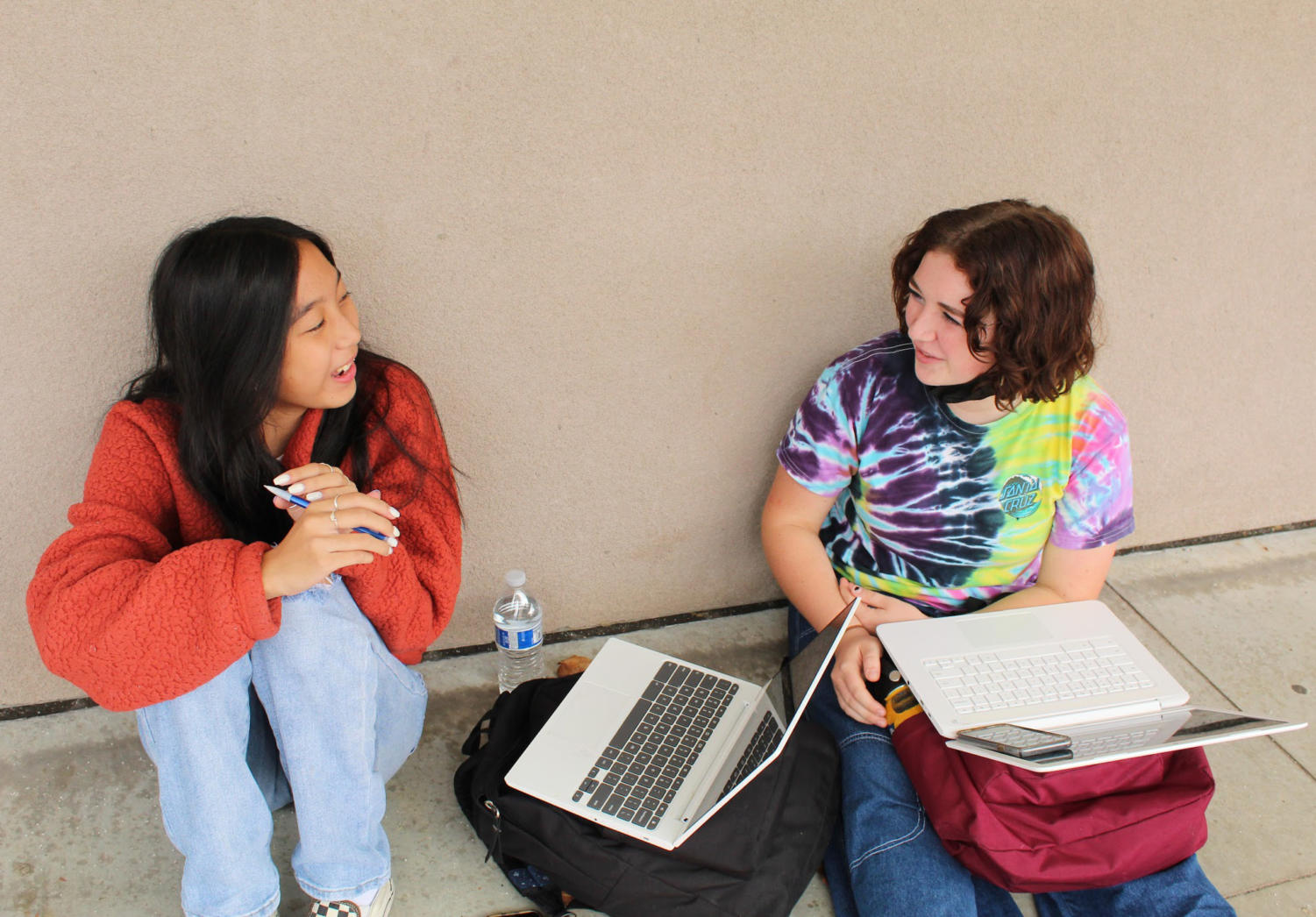Students express moods through clothing
October 8, 2021

One of Kailyn Donnelly’s (9) favorite clothing stores smells like the beach. St Peter’s Thrift Shop is a scene of chaotic beauty—many of the entrances are barricaded by boxes stacked high with books and folded piles of clothing. Clothing racks vary in size and shape and are haphazardly strewn in and out of the store. Each room elicits a different emotion; one exudes warmth in its rich wall color and spaciousness, another has darker-painted walls and is a tight space.
Donnelly found wonder in fashion during the pandemic and spent her free time watching videos about the subject and brainstorming her own outfit ideas. As clothing stores reopened, this emboldened her to make these visions she had at home, a reality. She now finds solace in her new, expressive clothing.
“I tend to overthink a lot and so [with] everything I do and say, I feel like it’s being scrutinized,” she said. “If I’m presenting myself in a way that makes me feel a lot more comfortable, it makes me feel at ease, and therefore makes it easier for me to talk with my peers and such.”
Katie Lew’s (12) interest in fashion started long before quarantine. When she was younger, for example, she would take her mom’s scarves and drape them to create dresses for herself. Despite showing this initial interest, it took a pandemic for Lew to feel confident in how she dressed.
“Back in sophomore year I would pay attention to how people saw me and [what they thought] of me,” Lew said. “Over quarantine, since I wasn’t around people, I didn’t really have that concern in my mind. I would start making [small] progressions to how far I can go with being comfortable wearing certain [clothes] outside.”
Lew’s eclectic style, which ranges from streetwear, to preppy, to grunge, varies from day to day depending on her mood.
“I specifically choose certain items and certain outfits based on how I feel like I want to present myself that day,” Lew said. “Today, [for example], I wasn’t really feeling the best about my body, so I [wore] more baggy, oversized clothing.”
On days she’s feeling confident, she puts on her favorite corset, pairs it with a skirt of her choice, and laces up her Demonia black boots.
Donnelly’s process begins differently. She starts by assessing the weather. Colder weather, for example, warrants a flannel and either cargo pants or jeans. This is followed by her determining whether or not she’s swimming in ENS, which would result in her slipping on a simple t-shirt with her swimsuit underneath. It concludes similarly to Lew, with her gauging her confidence that day.
Higher levels of confidence for Donnelly are marked by a form-fitting shirt with jeans—and when she feels a bit more insecure, she dons a baggy t-shirt. Regardless of the weather, ENS swim days, or her confidence, she always slips on her light and dark green Converse.
During middle school, an era of VSCO girls and scrunchies, Donnelly based her fashion style on what was trendy, and her peers greatly influenced what she felt comfortable wearing.
“Usually, I never really went out of my way to curate a stunning outfit,” Donnelly said. “I would wear a basic shirt and bottoms, so I wasn’t uncomfortable—but I just wasn’t confident.”
Many of the brands her peers wore, such as Brandy Melville, weren’t size-inclusive and lacked diversity in their models, Donnelly said.
“They only [create clothing for] slim girls [who are] tall,” she said. “It’s just this one type of body [represented] and then [the brands] would have a token Asian or Black person, but mostly white [models] with stereotypical white [features such as] blonde [hair] and blue eyes.”
Repelled from this style and with more downtime during quarantine, Donnelly researched the clothing she was purchasing and began shopping exclusively at second-hand stores such as Flashbacks and Thrifty Threads in Encinitas.
Sustainability was a large catalyst for her to make a change in her clothing. She said she wanted to take a firm stance against fast fashion, which is a problem perpetuated by many popular retailers.
“There were different websites where I could look up how sustainable a store is and [after] going through so many stores, I was like, ‘Okay, literally every single store is fast fashion,’” she said. “And there are sustainable brands, but they’re all online, a shirt is 200 bucks, they’re all very minimalistic, [and] there’s no range of styles. So thrifting is, for me, the only sustainable option. Sustainability wasn’t [just] a plus, it was the main factor, but the fact that I liked the clothes in thrift stores really helped.”
Donnelly said in isolation, her confidence in herself thrived as she adopted a new 2000s-post-grunge fashion style, because she was in an environment away from friends and judgemental eyes.
“Instead of having to wear [new outfits] to school, where hundreds of kids who see me every day are going to see it, judge it, and think about it in their minds when they see me next, I can walk through the grocery store, where basically nobody there is going to ever see me again,” she said. “So I can test the waters with it, instead of having to think about all those heavy judgments.”
For both Donnelly and Lew, quarantine gave them the opportunity to develop their own senses of style. This led to clothing extending beyond the bounds of merely pieces of cloth, but meaningful vehicles of expression.
“I definitely noticed whenever I was wearing a good outfit, on the rare occasions I went out, or even just around the house, I felt better about myself,” Lew said. “It made me feel like I’m a different version of myself—like a better, upgraded version of myself than I usually am.”
When transitioning back to in-person school, Lew strived to put more effort into how she dressed to underscore the progress she’s made in her style.
Likewise, Donnelly said she was proud of how her style had developed to reflect herself better. Also, the more frequent compliments from others during outings before school started, made her feel secure enough to take the leap Aug. 18 without fear and anxiety.
Positive interactions with peers on campus only reinforced this newfound confidence.
“I was sitting against the wall in the hallway during lunch the other day, and I had my feet out,” Donnelly said. “This girl was just walking by and she was like ‘Oh, I love your shoes.’”
Because Donnelly tends to keep to herself, she said her clothing became an outlet when words failed her
“What people see is a lot of what they learn about me, so I put time and thought into what I wear as it’s how others perceive me,” she said. “The happiness I get from shopping and creating outfits and wearing them out is so much more than what I used to feel like back then [prior to quarantine]. [Being in isolation] changed how I embrace [my style] and made me more in-tune with myself and my own taste.”


